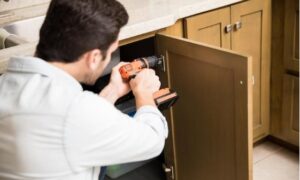Few symbols are as powerful an object of American identity and culture, like that of the classic sports car. From our Mustangs to Corvettes and everything in between, there is hardly an image that is so enduring of ‘Americana’, then long open roads in beautifully restored motor vehicles.
Any lover of all things vintage and classic will tell you, that the labor of love that comes along with restoring pre-loved cars beforeto their glory, is an immensely satisfying undertaking and has bonded dads with sons and beyond, for generations.
But what is it about car restoring that holds such a massively special place in the heart of America? Why are those symbols so powerful and what lies in store for the future of these cars that are not exactly known for their green credentials?
We’re going to take a look at a few of those questions in this post, and we’re also going to see where technology is making a difference too.
Our muscle cars, sports cars, and classics alike have a stronghold on how Americans view themselves through the lens of time. The latest Cadilac was a symbol of success in business and industry, while Mustangs and Corvettes were symbols of the upwardly mobile classes.
Enduring images of Hollywood starlets alongside leading men in convertibles and Chevvy’s capture the hearts and minds of generations, and it’s a trend that never seems to go away. Restored Mustangs command top dollar and specialist vehicle restorers can assist with anything from new seats to Mustang coilovers.
The Cadillac V-16, Chrysler Airflow, and Lincoln Continental were guaranteed to steal the show, and they said something about the driver that verbal communication could not. Whatever your reason for loving these national treasures, restoring them has become something of a generational pastime with dad’s passing the tradition onto sons and daughters and in so doing, creating a hugely sentimental and symbolic between the past, the present – and now with technological advances that will make these cars even more attractive, the future.
This brings us to the following section of this post, how will technology make these cars better, safer, and greener?
It starts, well – with starting your car.
Most classic vehicles make use of traditional breaker point ignition systems. These turn coils on and off when necessary which send a spark at just the right moment to ignite the fuel at the top of the piston’s stroke range.
Now there are a few issues with this system. Over time, contact points deteriorate and are subject to very heavy wear and tear as well as erosion. Contact breaker points also limit power input to coils, affecting overall performance or potential performance.
Wet weather is no great helper for these systems either because if the points get wet, they’ll stop working at all, and in cold weather, there could be problems starting the car too, and if that wasn’t enough, these issues in and of themselves could lead to decreased performance which in turn, could spell problems for the safe operation of the vehicle.
However, technological developments mean that an upgraded ignition system will improve fuel efficiency, make for smoother acceleration and more comfortable drive, reduce exhaust emissions, and ultimately be better for the environment.
Upgrading your classic car to an electronic system is one of the most affordable upgrades that you can make and will not just improve the driving experience of the car, but offer efficiencies in fuel and therefore cost, and you’ll be able to start your car, rain or shine.
Then, we look at improving the overall experience of driving and that leads us to:
Air Conditioning Upgrades.
The big evil in the motorcar industry, air conditioning has been blamed for everything from holes in the Ozone layer, to bringing about the apocalypse in global warming, but the truth is (as usual) vastly different from perception. While older models of air conditioning may well have a case to answer, today’s air conditioners are super-efficient, don’t take nearly as much energy as they used to, and unlike their older versions, don’t sap power from your cars.
Air conditioning upgrades may cost a little more at first, but upgrading the system in your classic car will not only please the inspectors and give your car a better rating (useful when selling in the future), but will also save you cash over the long-term and may well become law in many states soon enough.
Electronic and safety upgrades
Here is where car enthusiasts usually give the most pushback, because the purpose of driving and owning a classic car, is the authentic driving experience and this means loving all of the sounds as well as performance peculiarities that come with that experience. However, environmentalists disagree and there is increasing noise coming from local and regulatory authorities on the subjects of safety and efficiency too, this will explain why so many of us are considering buying electric cars.
However, electronic and safety upgrades don’t necessarily have to impact your driving experience, at least not that much anyway.
Install ‘three-point’ safety belts. It may seem strange to think about it now, but there was a time when safety belts were not issued as standard issue specs in motor cars. It was around the late 60s that laws were passed by successive countries and states that required these as standard issue. So, if your car was made prior to around 1968, you may not have any safety belts in your car at all, and this is very much illegal in most if not all jurisdictions.
Anti-bake lockers
We get it, many classic car enthusiasts don’t want to mess with the aesthetic of their cars, however upgrading to an anti-lock system will improve the safe handling prospects of your vehicle, dramatically and could mean the difference between life and death as well as less risk of skidding on icy or wet roads. Upgrading your braking system will still allow for the car to appear as original, but afford you the opportunity of having a meaningful safety element where it matters the most on your car. If you’re involved in a car accident as a result of decreased braking capacity, you could also land in hot water with the law.



































